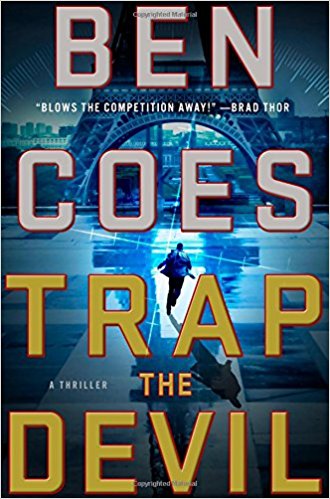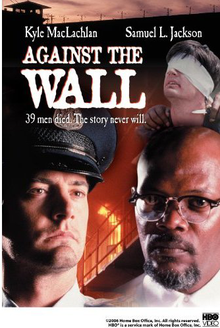Writing a post here has been under-inspiring since it seems that all of the efforts to accomplish a food forest (of sorts) here in the Southeastern corner of Arizona, USA shows so little impact over the short term and therefore little to talk about.
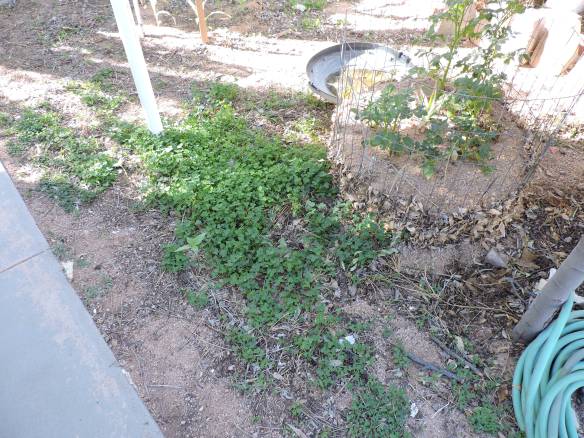
Clover doing well in a shady spot
I have, however come to the solid conclusion that bringing in outside inputs is futile and a waste of money, aside from the wonderful leaves my neighbor contributed last fall; which, by the way were free save the exchange of tomatoes come harvest.
Leaves seem to be the pièce de résistance; the resource of most importance.
He had so much, and combined with what I had, it amounted to enough to spread some over things and corral the rest in a big bin to decompose.
Overwinter, I utilized , liquid gold, (urine), to accelerate the decomposition of the leaves in the bin. By the time Spring rolled around, the bin leaves were a wonderful, nearly broken down mass of wonderful, dark, rich humus. The leaves atop of things were nowhere near as well decomposed. They did seem to add to the quality of the soil underneath them, but not to any great degree. The bin leaves were simply wonderful. I did not turn the leaves at all. They just sat there all Winter getting rained on, watered when I thought about it and urine was dumped over them from time to time.
The bagged goods and straw have only been of value for pathways. There is just so little moisture in the air and it rains so infrequently, that it doesn’t have anything to hold into the soil or use to break itself down with before it crumbles into little else than dust that blows away. Wood chips don’t blow away as much as they simply DO NOT breakdown well. Fine for paths and possibly over things to help keep from having weeds.
Straw I’m pretty sure brought in herbicides and I just read lately that it is a preferred habitat for slugs.
So, the more I read, and the more I practice, practice, practice, I am being lead to the Masanobu Fukuoka, “One Straw Revolution” direction of things…
After The One-Straw Revolution was published in English, Mr. Fukuoka traveled to Africa, India, Southeast Asia, Europe and the United States. His interest turned to rehabilitating the deserts of the world using his natural farming techniques. This work is described in detail in Sowing Seeds In The Desert (2012). Mr. Fukuoka is also the author of The Natural Way of Farming and The Road Back to Nature. In 1988 he received the Magsaysay Award, often referred to as the “Nobel of Asia,” for Public Service. Sowing Seeds in the Desert by Masanobu Fukuoka – Chelsea Green
…as well as the Will Bonsall‘s philosophy of “no external inputs” and growing your own compost.
Will Bonsall’s Essential Guide to Radical, Self-Reliant Gardening: Innovative Techniques for Growing Vegetables, Grains, and Perennial Food Crops with Minimal Fossil Fuel and Animal Inputs
As a vegan, Will consumes no animal products. He enjoys fruits, vegetables, leafy greens, and whole grain products. His gardens are filled with a variety of crops. Animal manure is out of the question for Will as he feels that relying on cow manure is tying in with a system where farmers are raising crops to feed animals in a cycle which depletes the food that should be grown for human consumption. Only green manure is used at Khadigar Farm. Will also is in opposition to farmers focusing on growing their food primarily for markets. He feels that food should be grown for a self-sufficient lifestyle.
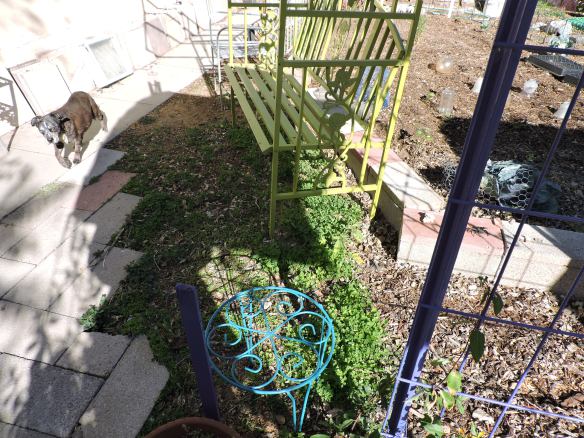
Green ‘ground cover’, clover
Clover is wonderful. It can be tall or short. This is short, White Dutch clover being grown mainly to add to the value of a sitting area but it also is a flowering plant that the bees love. It requires regular irrigation, so not so wise in the desert. It does much better in less than direct Sun to even shade. It’s a nitrogen fixer, so I let it live among growing things as well.
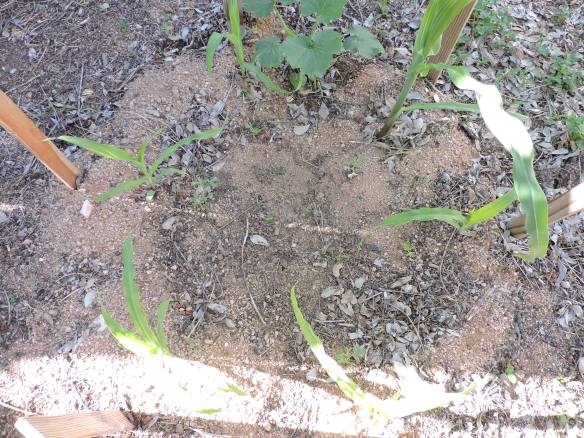
Squash Pit, buried paper/organic matter
If you’ve never heard of a squash pit then you might be thinking “but squash have seeds, not pits!”. True, true, but check out this fun video.
I have also decided that burying things is a better strategy than carbon-type mulches over things. So, instead of trying to make compost with all of the resources available, much of it gets buried in things like Hugelkultur or Squash Pits. The above pictured pit was planted with popcorn, (the first sown seeds only yielded one stalk, so it was resown), squash and some bean seeds that were in a jar I thought were from a friend. I think they were garbanzo beans from a bag I opened thinking I would cook and didn’t. They popped right up, so whatever works. It’s all biomass if nothing else. At this point, it’s all about growing/utilizing things that will add to building soil. I had to resow the squashes too. One came up with the first sowing, now the rest are starting to show.
Hugelkultur are no-dig raised beds with a difference. They hold moisture, build fertility, maximize surface volume and are great spaces for growing fruit, vegetables and herbs. Hugelkultur, pronounced Hoo-gul-culture, means hill culture or hill mound.
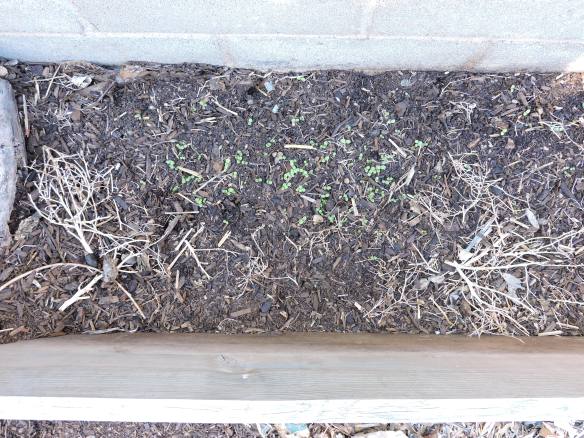
Excess seeds broadcast to sprout for green cover; lettuce
Last Spring lettuce was grown in the #NorthFencePlot to little avail. It grew well enough, but was all very bitter. It was left as biomass. A few were left to bolt for saving seeds. They are tiny and hard to harvest, so I just crumpled up the debris and rubbed it all over the #2NarrowRaisedBed. It’s popping up nicely for a green cover. This was originally filled with terrible bagged goods that nothing would grow in. Most of it was scooped out into the path; the finer stuff was left in. The newly growing green things will add to the continuing breakdown of the woody matter over time.
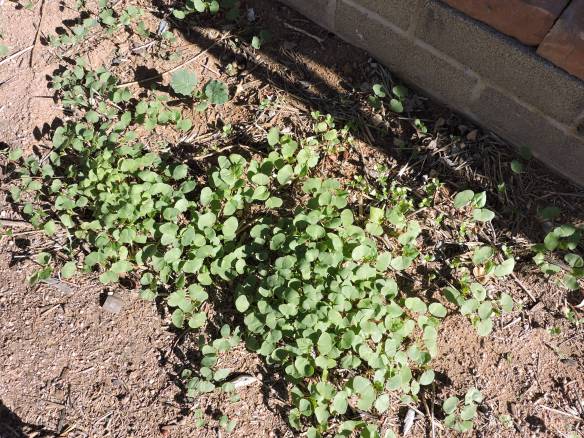
Buckwheat; another green ground cover/chop and drop
Buckwheat is behaving just as it was described to do. It sprouts almost anywhere, grows very quickly and can stand the heat. It is being sown wherever there is a bare patch of ‘dirt’ for a green cover crop/chop and drop. It will self sow in some climates. We’ll wait and see if it will here. It has been broadcast twice now, so some is flowering already.
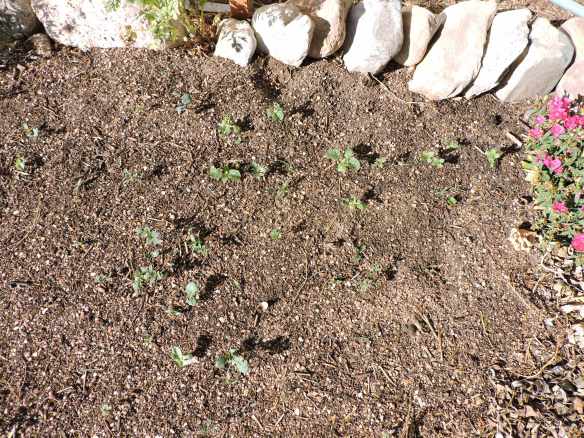
Volunteers sprouting in this compost material
This material was from a compost heap that broke down rather nicely over winter. It was well lasagna-ed with everything I could get my hands on at the time; kitchen scraps, debris from last season, cardboard, paper, weeds…
Apparently, it didn’t get ‘hot’ as now things are sprouting/volunteering and I’m a gonna just let them have at it to see what comes of it. Again, more ground cover/biomass if nothing else.
Here is a great article found this week to help improve methods of no-till strategies:
Top Three Guiding Principles to Organic, No-Till Farming
1. Soil is Boss. Ways to treat the boss:
2. Water is EVERYTHING. Ways to bring more water and life into your land, without tapping underground water sources:
3. Observe your land. Ways to observe the land:
And another about utilizing compost as mulch, which is basically what I’m doing with the beautiful, dark, rich leaf mulch from the bin that overwintered:
And finally, here is a very fun video with a real character describing Masanobu Fukuoka‘s methods of growing food with the least intervention; “Do Nothing” meaning let nature work her magic and only do what nature would:Can Compost Be Used As Mulch: Information On Using Compost As Garden Mulch …Using compost as garden mulch gives all the benefits of regular, non-organic mulches and adds the bonus of nutrients being constantly leached into the soil below. As the rain runs through the compost, micro amounts of nitrogen and carbon are washed downward, constantly improving the soil…”
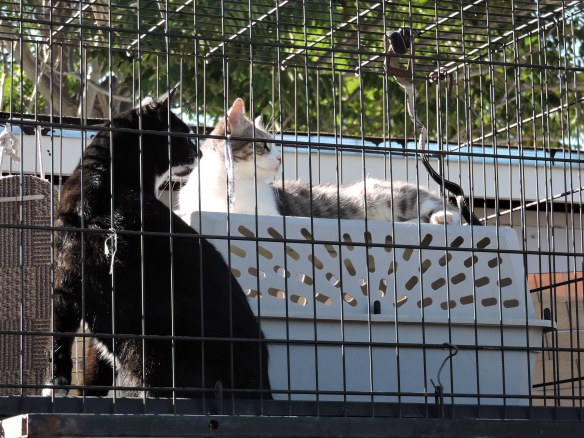
MickeyMouser and Lucy (Mini) in their #HighriseLoftApartment under a tree, doing the no-till (it’s time to eat), do nothing method.

Chop and drop yellow, tall clover under the Apricot tree.
So, Bob’s your uncle! That’s what the plan is now.
Happy No-Till Gardening to you all.
For more images of the processes:
#SquashPit (album on Facebook page)
#Hugelkultur (album on Facebook page)
Advertisements Share this: